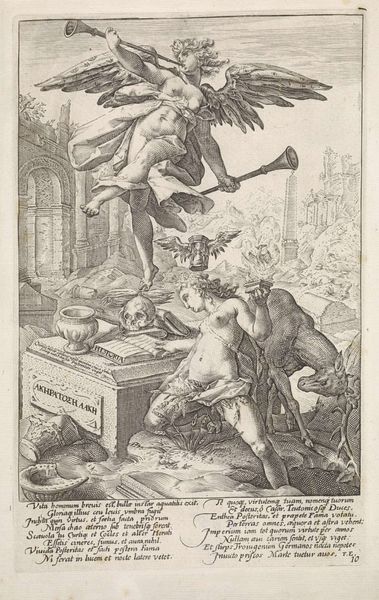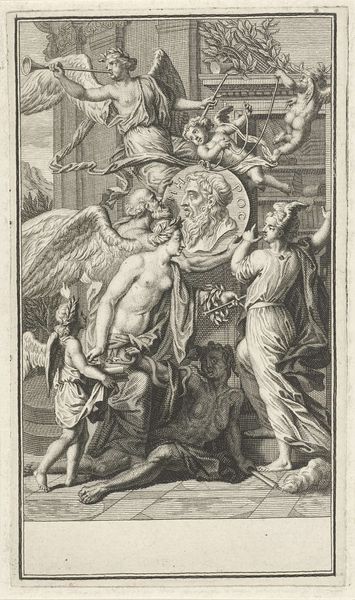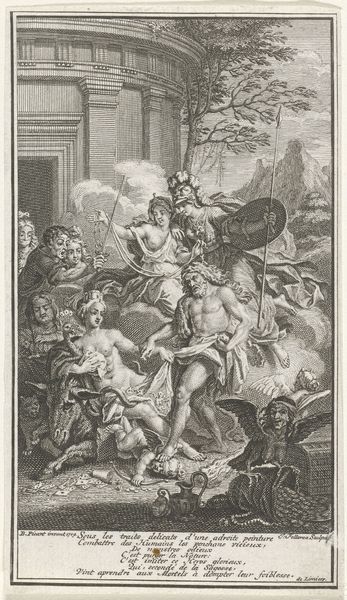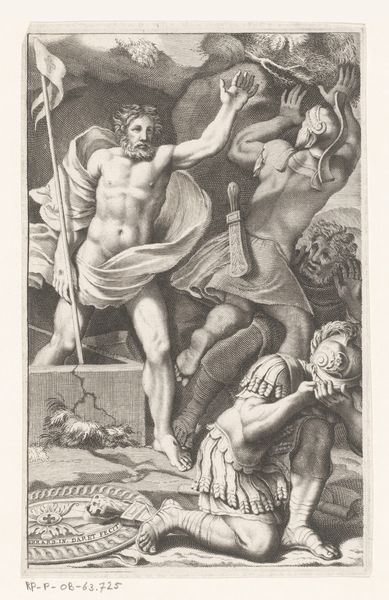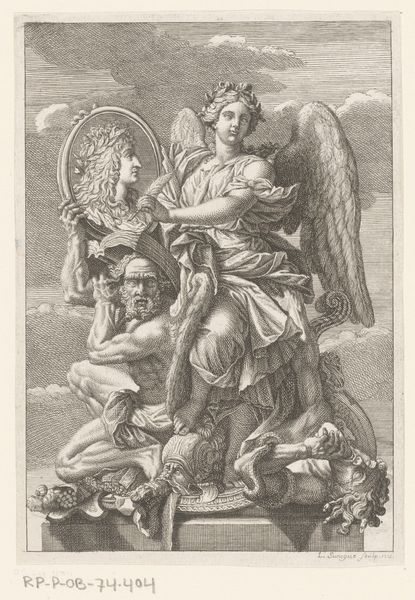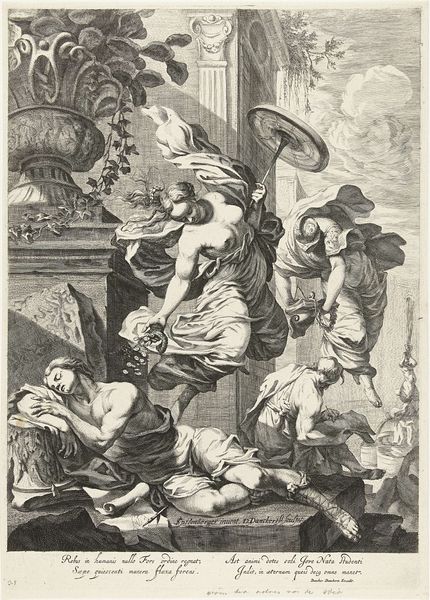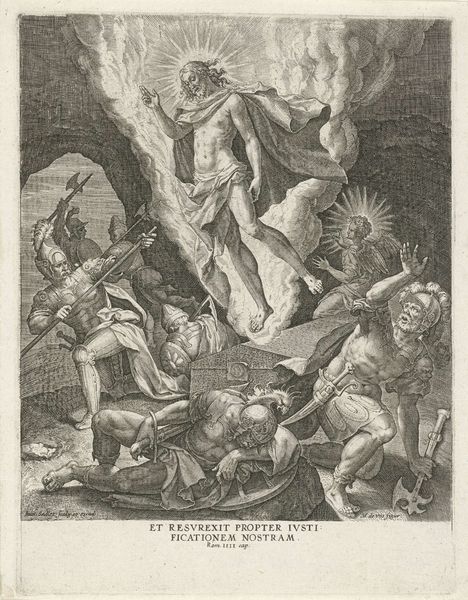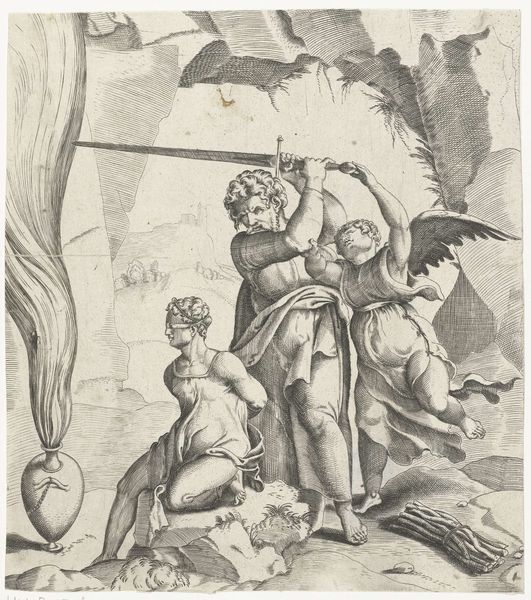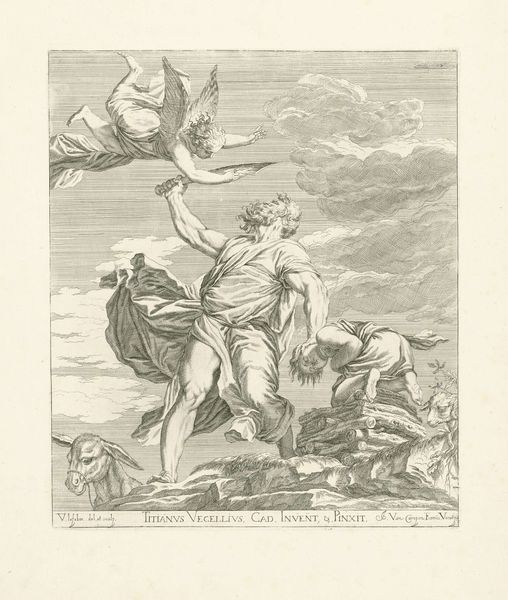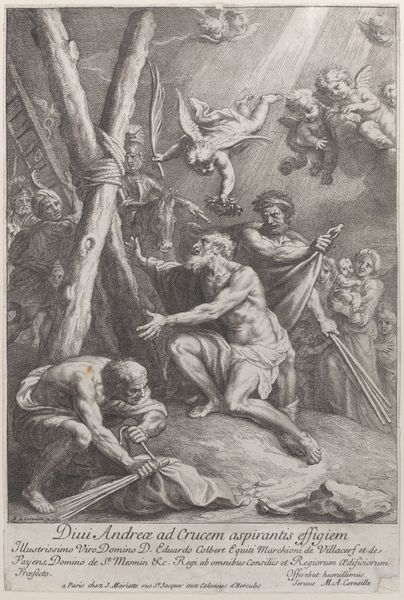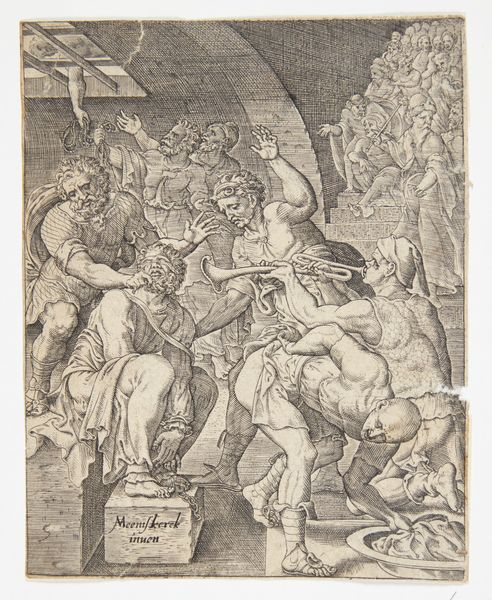
Dimensions: 373 mm (height) x 235 mm (width) (bladmaal)
Curator: This engraving, crafted in 1586 by Hendrick Goltzius, is entitled "Allegory of Fame and History" and currently resides at the Statens Museum for Kunst. Its linear precision and dramatic composition, typical of Baroque printmaking, immediately grab the eye. Editor: It feels… crowded. Not necessarily in a bad way. There's this whirlwind of figures and objects. What catches me is how starkly contrasting the ethereal upper section is from the chaotic scene below. What strikes you? Curator: The layering. Note how Goltzius positions Fame, complete with trumpets and billowing drapery, high above the earthbound figures of History, time, and earthly pursuits. His mastery of engraving allowed for these incredibly detailed scenes depicting allegorical ideas concerning transience and eternal legacy, no mean feat for the material limits of the medium. Editor: True. I like how Fame’s figure feels active and almost forceful in delivering this message of acclaim. The angel itself feels like the perfect form to use and makes it grand. Meanwhile, below is much quieter: History sits almost meditative surrounded by ruins, books and even death, contemplating what stories will be left. The hourglass with wings underscores how fleeting time is and this pressure of preserving fame and accomplishments feels all encompassing in this lower section, it feels as if it has physical weight pressing down. Curator: And consider how Goltzius uses those lines, which create form, shadow, and depth with impressive precision given the inherent limitations of printmaking in the late 16th century. The text adds a dimension, too—connecting visual metaphor to concrete ideas about virtue and remembrance in ways only possible given widespread growth of publishing in early modern Europe. Editor: Speaking of which, did printmaking help make artworks more available to the average person? It feels fitting that something tackling such monumental abstract themes also got that little everyday kick. It almost seems the work is saying ‘how can something that's so big, feel so normal?’ Curator: Exactly, this speaks volumes about how processes of mechanical reproduction democratized both images and knowledge in Renaissance culture, and the way visual motifs entered the wider artistic vernacular beyond the art world. This then became essential for political messaging and propaganda for all factions to compete on. Editor: Hmm, okay, yeah. Well, whatever his aims were, the work successfully expresses, in a very baroque fashion, our struggles with leaving our mark and outrunning the inevitable forgetting. Curator: Precisely; seeing how an object like this—a print, fundamentally reproducible— negotiates concepts of enduring fame offers much food for thought.
Comments
No comments
Be the first to comment and join the conversation on the ultimate creative platform.
